Tuberose Profile
Written by admin
Nov 03 2020
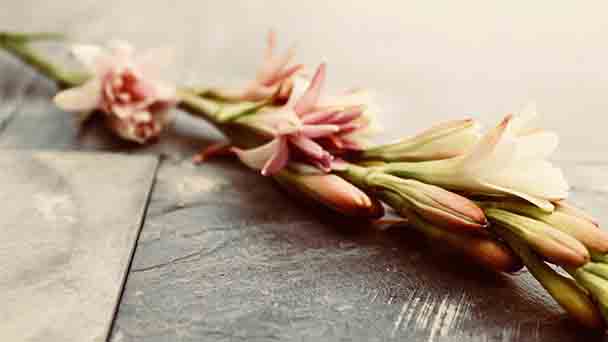
Tuberose belongs to the Amaryllidaceae family. Tuberose is a perennial herb that can reach 1 meter in height. The stems are erect and unbranched. The basal leaves are clustered, linear, pointed at the tip, dark green, scattered on the flower stem, and gradually smaller in the shape of a bract. The spikes of tuberose are terminal, with flowers in each bract, and the bracts are green. The flowers are milky white, fragrant, and the perianth lobes are similar to each other, oblong-lanceolate, inferior ovary, slender style, capsule ovoid, The tuberose seeds are mostly, slightly flat. The flowering period of tuberose is generally from July to September.
Tuberose morphological characteristicsTuberose efficacy and roleThe ornamental value of tuberoseThe economic value of tuberoseTuberose growth habit and growing environment and distributionTuberose cultivation
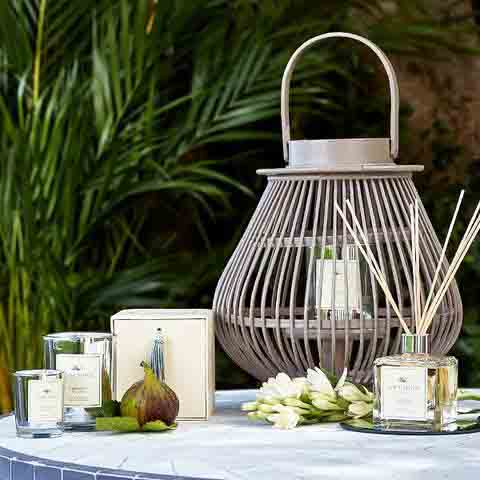
Tuberose is very easy to plant and control the flowering period, so it is also one of the most important cut flowers. It is the most commonly used and most important flower arrangement among many bouquets and flower arrangements.
Tuberose morphological characteristics
Tuberose is a perennial herb that can reach 1 meter in height. The stems are erect and unbranched.Its basal leaves grow in clusters of 6-9 pieces, linear, 40-60 cm long and 1 cm wide, with pointed tips and dark green. The leaves on the flower stem are scattered, gradually smaller in the shape of a bract.
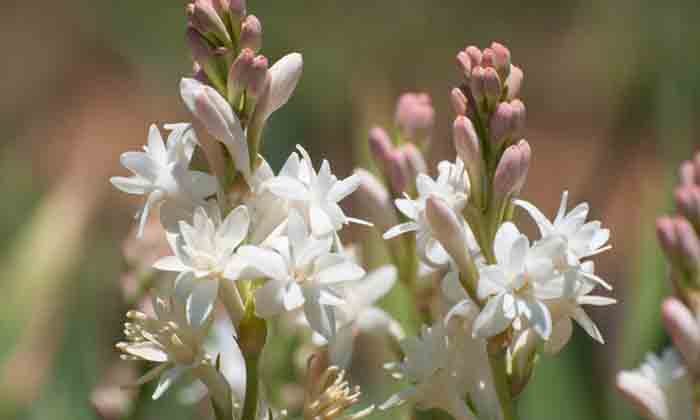
Tuberose efficacy and role
The ornamental value of tuberose
Tuberose with green leaves, stalks, jasper rosy, scented and clean, with a delicate fragrance, making people forget the summer heat in July and feel refreshed.Tuberose has a long flower stem and a long flowering period. It is an important material for cut flowers and a beautiful flower for flower beds.
The economic value of tuberose
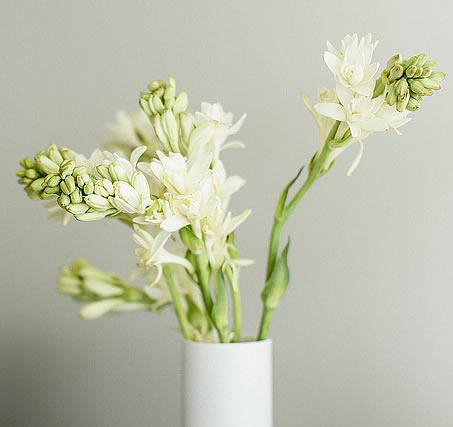
Tuberose growth habit and growing environment and distribution
Tuberose is native to Mexico and South America and is cultivated more in northern China than in southern China. In 2004, Tianjin was introduced and cultivated. By 2004, some flower farmers in Xinhe, Shucheng and other towns of Shuyang County, Jiangsu Province introduced and tried planting successfully.Tuberose in its place of origin is evergreen grass. It grows year-round when the temperature is suitable. It blooms in four seasons, but the summer is the most prosperous. When it is cultivated in open field in China, it can only be cultivated in spring because of the severely cold winter in most areas: Buds grow in spring, bloom in summer and autumn, and dormant in winter (forced dormancy). Tuberose self-pollinates, but since the pistil matures later than the stamen, the natural seed setting rate is very low.
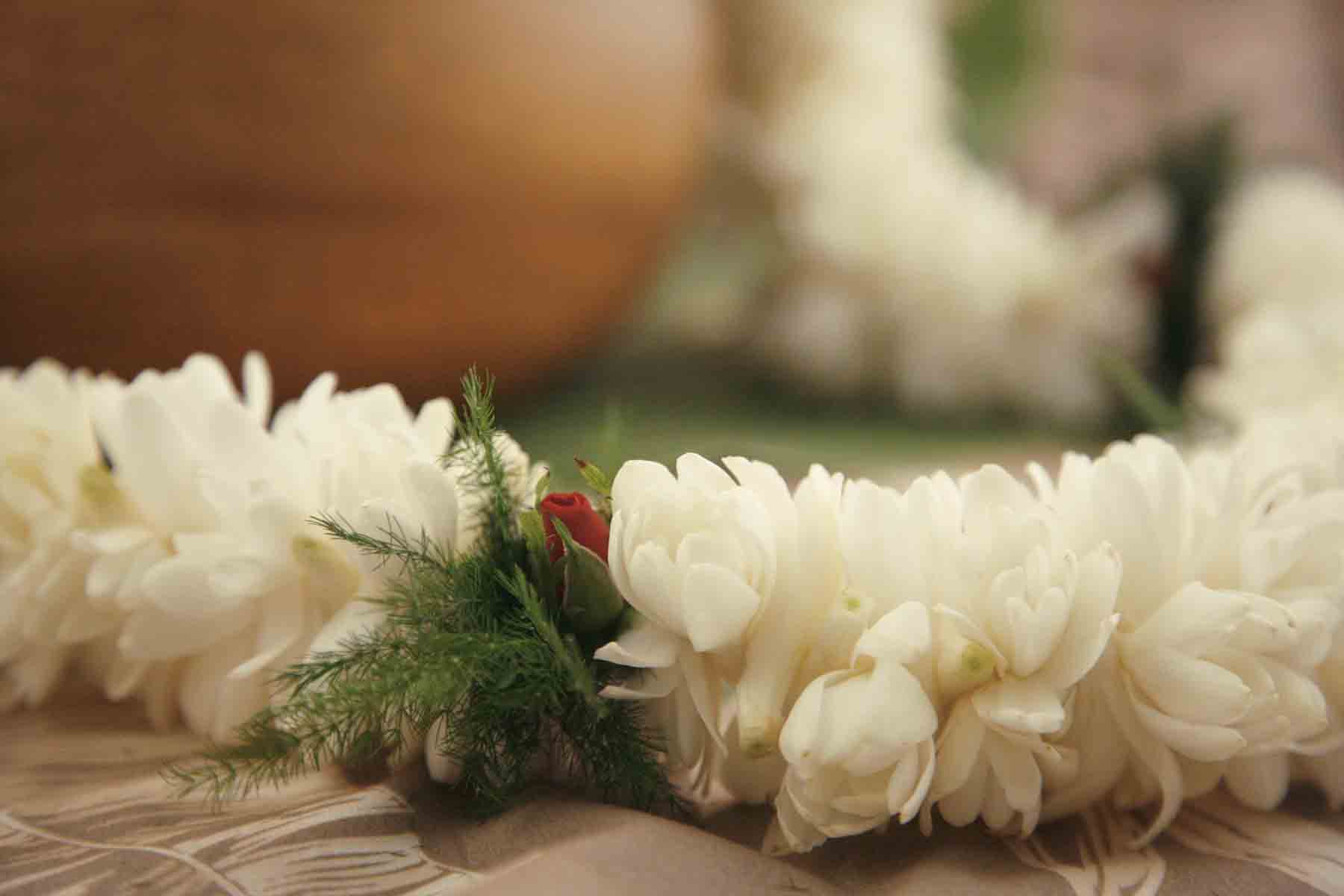
Tuberose cultivation
Tuberose is mostly propagated by dividing bulbs. In late November, the underground stems are dugout after the upper ground withered to remove the shrinking old bulbs. Generally, each cluster can be divided into 5-6 flowering (large) bulbs and 10-25 reproduction (small) After drying the balls, store them in a dry place. The balls are divided in spring, and the big and small balls are planted separately. The big ball of tuberose can bloom in the same year, and the diameter of the big ball for cut flower production should be more than 2.5 cm. The small bulbs can be cultivated for 1-2 years and grow into bulbs with a diameter of more than 2.5 cm before flowering.Latest Updated
- Benefits of Bugleweed - 7 Science-backed Health Benefits
- Bugleweed Dangers & Side Effects - Is It Poisonous?
- How to Plant Evergreen Trees - What You Should Know
- When to Plant Evergreens - Grow Guide for Evergreen Trees
- 12 Wonderful Evergreen Shrubs for Your Garden
- 12 Popular Evergreen Plants with Pictures for Beginners
- When And How To Prune A Lilac Bush Like a Pro
- How to Grow & Care for Lilac Vine (Hardenbergia Violacea)
- Japanese Lilac Tree (Syringa Reticulata) Care & Propagation Guide
- Shumard Oak Pros and Cons - What to Know
Popular Articles
- Winter maintenance of Antirrhinum Majus
- How to Grow Terminalia Mantaly Tree
- How to Grow and Care for Crossostephium Chinense
- How to grow Antirrhinum Majus in spring
- Peristeria Elata (Dove Orchid) Profile: Info & Care Guide
- Underwatered Snake Plant (Sansevieria Trifasciata) - Signs And How To Fix
- How to Care for Brazilian Jasmine Plant (Mandevilla Sanderi)
- How to Grow & Care for Graptopetalum Purple Delight in Summer
- Rosa Chinensis (China Rose): Plant Growing & Care Tips
- How to Care for Baby Sun Rose (Aptenia Cordifolia)